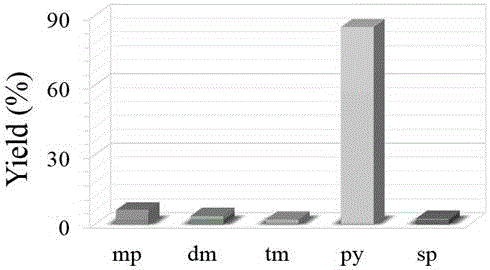Method for double-signal in-situ detection of intracellular microRNA based on gold-upconversion nanoparticle tetrahedron
A nanoparticle, in situ detection technology, applied in the determination/inspection of microorganisms, biochemical equipment and methods, etc., can solve the problem of cancer cells to be explored and so on
- Summary
- Abstract
- Description
- Claims
- Application Information
AI Technical Summary
Problems solved by technology
Method used
Image
Examples
Embodiment 1
[0037] Example 1 Gold nanoparticles and upconversion nanoparticles (NaGdF 4 :Yb, Er) preparation
[0038] (1) Preparation of 20nm gold nanoparticles
[0039] Add 97.5mL ultrapure water to a clean three-neck flask, add 2.5mL 0.4% chloroauric acid solution, stir and heat to boiling, add 1.6mL 1% trisodium citrate solution after 7-8min, the solution changes from colorless to red After that, the heating was stopped and stirring was continued for 15 min. After natural cooling, place in a 4°C refrigerator for later use.
[0040] (2) 19nm up-conversion nanoparticles (NaGdF 4 :Yb, Er) preparation
[0041] Add 0.80 mmol of GdCl to a mixture containing 14 mL of OA (ligand octadecenoic acid) and 16 mL of ODE (non-coordinating organic solvent octadecene) 3 ∙ 6H 2 O, 0.18 mmol of YbCl 3 ∙6H 2 O and 0.02 mmol ErCl 3 ∙ 6H 2 O, dissolved. Heating to 150°C under a nitrogen atmosphere formed a homogeneous solution. After cooling down to room temperature, it contains 0.100 g of NaOH ...
Embodiment 2
[0043] DNA sequence design for microRNA detection
[0044]
[0045] Note: The DNA used in this invention was purchased from Shanghai Sangon Bioengineering Co., Ltd., China, and purified by polyacrylamide gel electrophoresis.
Embodiment 3
[0046] Example 3 Preparation of Detection Probes
[0047] First prepare the conjugates of gold nanoparticles and nucleic acids: mix 20nM gold nanoparticles (AuNP) with DNA1-Py3 and DNA-Py4 at a molar ratio of 1:3.5, and add NaCl solution after reacting for 1 hour. The solubility is 50mM, mixed evenly, reacted overnight, and centrifuged to remove free nucleic acid to obtain AuNP-DNA-Py3 and AuNP-DNA-Py4. Then prepare the conjugates of upconverting nanoparticles and nucleic acids: mix 20nM upconverting nanoparticles (UCNP) with DNA-Py1 and DNA-Py2 in a molar ratio of 1:3.5, add NaNO after reacting for 1h 3 The solution was mixed evenly until the final solubility was 50 mM, reacted overnight, and centrifuged to remove free nucleic acid to obtain UCNP-DNA-Py1 and UCNP-DNA-Py2. Next, mix the obtained AuNP-DNA-Py3 and AuNP-DNA-Py4, UCNP-DNA-Py1 and UCNP-DNA-Py2 respectively, add NaCl to a final concentration of 50mM, bathe at 95°C for 5min, and then incubate at 37°C for 8h. That i...
PUM
 Login to View More
Login to View More Abstract
Description
Claims
Application Information
 Login to View More
Login to View More - R&D
- Intellectual Property
- Life Sciences
- Materials
- Tech Scout
- Unparalleled Data Quality
- Higher Quality Content
- 60% Fewer Hallucinations
Browse by: Latest US Patents, China's latest patents, Technical Efficacy Thesaurus, Application Domain, Technology Topic, Popular Technical Reports.
© 2025 PatSnap. All rights reserved.Legal|Privacy policy|Modern Slavery Act Transparency Statement|Sitemap|About US| Contact US: help@patsnap.com



